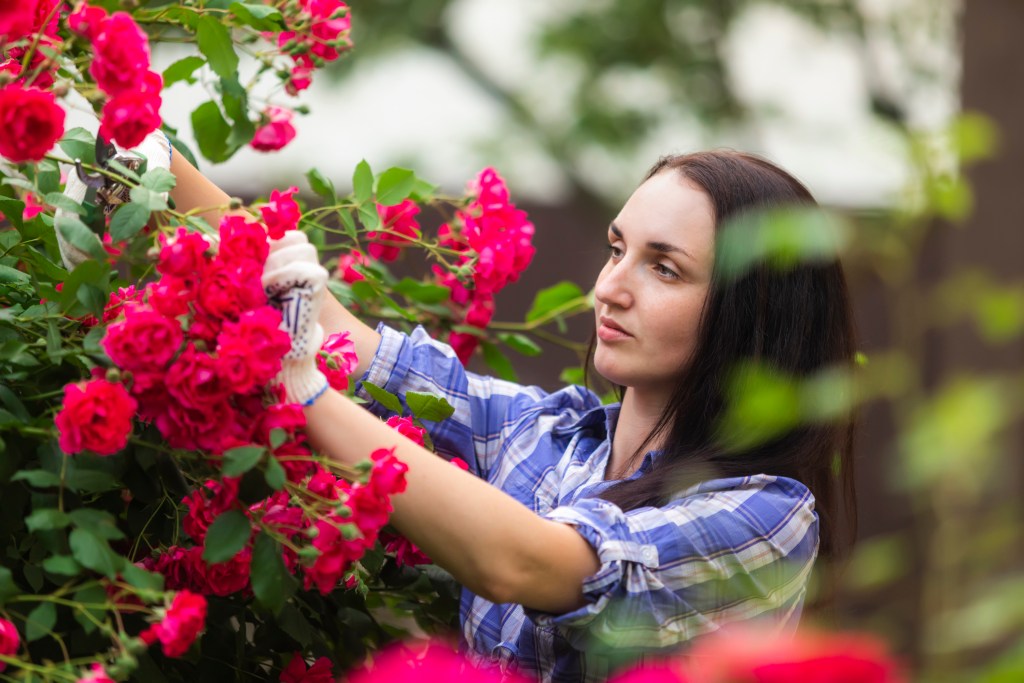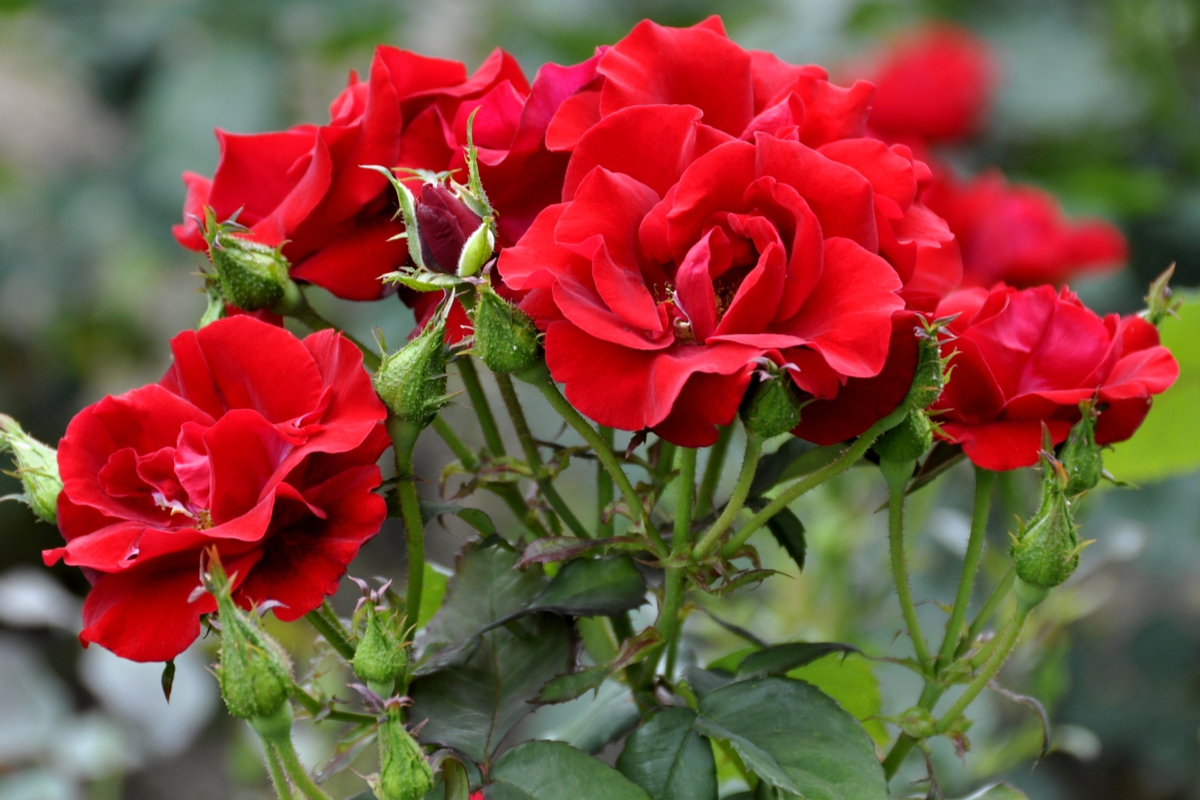Roses in bloom are lovely, so how can you make more plants from the roses you already have? Growing roses from stem cuttings may appear to be quite the undertaking, but it can be as easy as rooting any other plant. If you’re curious about how to propagate roses from stem cuttings, here are three methods to try — including the infamous potato hack that’s been making the rounds on the Internet.

How to grow roses from cuttings in soil
To grow roses from cuttings in soil, all you have to do is find semi-hardwood stems. That’s to say, find a plant with stems that are slightly hardened but still have flexibility. It’s best to source your stems from a live plant as opposed to a bouquet, but the latter could work if you have the ideal stem hardness available to you.
After getting your rose stems, make your cuts with clean pruning shears. Make two snips: One below a node at the bottom and one above a leaf set on top. Dip the lower part of the cutting into rooting hormone and then stick your cutting into a sterile growing medium. Your medium can be anything from coir to a mix of perlite and compost, it just needs to be free from any bacteria or fungi that could kill your cutting.
Some gardeners leave a humidity tent or cloche around the cutting, while others prefer to give their cuttings air to breathe. Covering your cutting can provide it with warmth and humidity, but it can also make it susceptible to burn and rot. In any case, leave your container in an area that gets bright indirect light and keep the soil moist but never soggy. In about three to four weeks, roots should appear.
Wondering how to grow roses from cuttings without rooting hormone? It can be just as simple as placing your roses into water or soil without rooting hormone. The roots may, however, take longer to appear.

How to grow roses from cuttings in water
If you want to grow rose roots from cuttings in water, you can do that as well. Find a stem that’s at least four to six inches long, then make a diagonal cut just below a node. Pick off the lower sets of leaves and cut off any buds.
All you have to do is take cuttings and place them in a container of water, leaving your jar in bright direct sunlight. Every week or so, replace your water. After about a month, or whenever your cuttings root, move your rooted plants into a pot with fresh soil. Once it’s in soil, you can place some kind of cloche over your cuttings to help them grow leaves and maintain humidity, but this is, of course, entirely optional.

How to grow roses from cuttings using potatoes
Growing roses from potatoes seems like a gimmicky trick that’s too good to be true, right? A handful of YouTube gardeners have called this technique a “myth,” but it could be worth a shot nonetheless. The idea is that you find a potato, create a small hole inside it with a drill bit, then stick your rose cutting into the hole. It helps to use a potato with higher water content, such as a white or red potato. You may also want to experiment with burying the potato underneath some potting mix to give it nutrients or even dipping your cutting into honey to prevent rot. Your mileage may vary with this method, as it’s not as tried and true as soil or water propagation.
Looking for a more promising approach? YouTube user “DIY Garden Ideas” has featured a modified air layering technique using a potato. The idea is, you’d air layer your stem but then keep it between two potato wedges before you stuff in your sphagnum moss or coir and wrap everything in plastic. You’d want to cut a potato in half and slice divots into each half so that they fit your rose stem. Where the halves meet the stem, carefully cut off some of the stem skin without cutting off the stem completely. Roots should grow from this, but you can really go about the technique sans potato.
To fill your landscape with even more roses, propagate them with stem cuttings! If you’re feeling experimental and have an abundance of rose stems, try your hand at the potato method, but you’ll probably have the best success with soil and water propagation or even air layering. In any case, healthy cuttings, clean pruning shears, and plenty of patience can help you go a long way with rose propagation.
Editors' Recommendations
- Everything you need to know about choosing the best rocks for landscaping
- 6 tips you should keep in mind when building your own drought-tolerant garden
- Could electrogardening be the way of the future?
- Do you live in climate zone 10? Here’s our guide to choosing the perfect climate zone 10 plants
- From mini Christmas trees to ivy wreaths, here are the best small holiday season foliage picks




